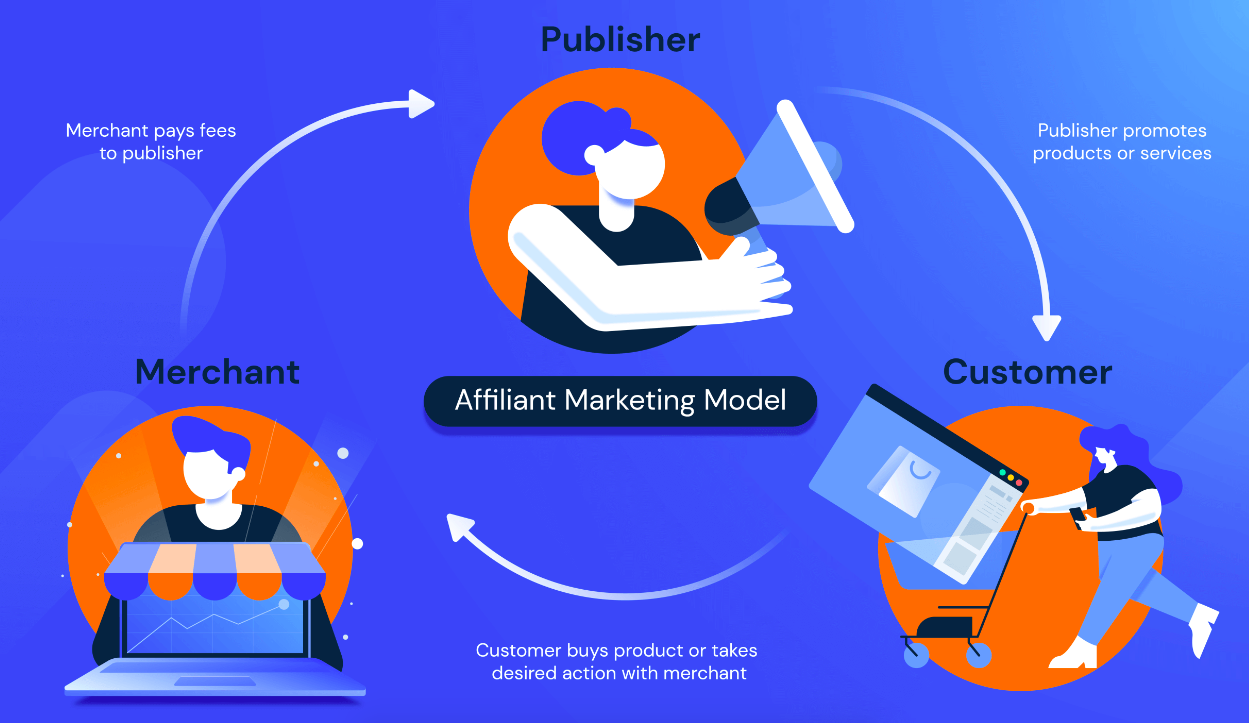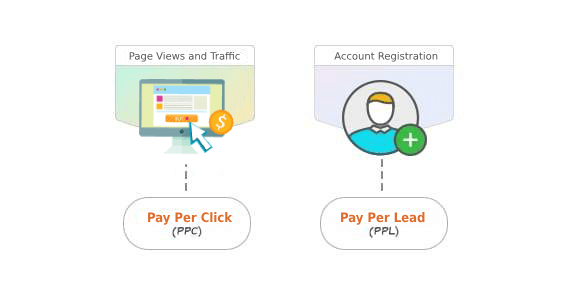Affiliate marketing models refer to the different ways in which businesses pay their affiliates for their promotional efforts. The most common models include pay-per-sale, pay-per-lead, pay-per-click and lifetime/recurring commission. Pay-per-sale model pays affiliates a commission for each sale made as a result of their promotions. The pay-per-lead model, on the other hand, pays affiliates a commission for each lead generated as a result of their promotions. Pay-per-click model pays affiliates a commission for each click on their affiliate link, regardless of whether a sale or lead is generated. The lifetime/recurring commission model pays commission for as long as the referred customer stays with the merchant. Each model has its own set of advantages and disadvantages, and choosing the right one will depend on the specific needs of the business and its target audience. Some merchants may also choose to combine two or more models.
what is affiliate marketing ?
Affiliate marketing is a performance-based marketing strategy in which a business rewards one or more affiliates for each visitor or customer brought about by the affiliate's own marketing efforts. Affiliates typically promote a business through their own personal networks, websites, or social media channels. The affiliate is then given a unique link or code to track their promotions, and is typically paid a commission for any resulting sales. There are several different models of affiliate marketing, each with its own unique set of pros and cons. The most common models include:
1. Pay-per-sale:
Pay-per-sale, also known as "cost-per-sale" or "cost-per-action," is a model of affiliate marketing in which businesses pay their affiliates a commission for each sale made as a result of their promotions. Under this model, an affiliate promotes a merchant's products or services through their own personal networks, websites, or social media channels and is given a unique link or code to track their promotions. When a customer clicks on the link and makes a purchase, the affiliate earns a commission.
However, pay-per-sale model can be challenging for affiliates as they may need to generate a large volume of traffic in order to see significant earnings. Additionally, if the merchant's product or service is not in high demand or the commission rate is low, it may be difficult for affiliates to make a substantial profit.
2. Pay-per-lead:
Pay-per-lead is a model of affiliate marketing in which businesses pay their affiliates a commission for each lead generated as a result of their promotions. Under this model, an affiliate promotes a merchant's products or services through their own personal networks, websites, or social media channels, and is given a unique link or code to track their promotions. When a customer clicks on the link and completes a form, sign-up or registration, the affiliate earns a commission.
One of the main advantages of the pay-per-lead model is that it allows merchants track the success of an affiliate's promotions more accurately. Since the affiliate is paid for each lead generated, merchants can more easily measure the effectiveness of their campaigns. Additionally, it can be beneficial for affiliates as it allows them to earn a commission even if the visitor doesn't make a purchase.
However, pay-per-lead model can be challenging for both merchants and affiliates as they may need to generate a large volume of leads in order to see significant earnings. Additionally, if the merchant's product or service is not in high demand or the commission rate is low, it may be difficult for affiliates to make a substantial profit. Additionally, merchants need to ensure that the leads generated are of high quality and have a good conversion rate.
3. Pay-per-click:
Pay-per-click (PPC) is a model of affiliate marketing in which businesses pay their affiliates a commission for each click on their affiliate link, regardless of whether a sale or lead is generated. This model is also known as "cost-per-click" (CPC) or "pay-per-impression" (PPI). Under this model, an affiliate promotes a merchant's products or services through their own personal networks, websites, or social media channels and is given a unique link or code to track their promotions. When a customer clicks on the link, the affiliate earns a commission.
One of the main advantages of the pay-per-click model is that it allows affiliates to earn money for each click, even if the visitor doesn't make a purchase or sign up. It is also a good model for affiliates who have a high volume of website traffic or large social media following. Additionally, it can be beneficial for merchants as it allows them to quickly test different affiliate promotions and identify the most effective ones.
However, pay-per-click model can be challenging for merchants as they may need to pay out a large number of commissions without any resulting sales or leads. Additionally, if the merchant's product or service is not in high demand or the commission rate is low, it may be difficult for affiliates to make a substantial profit. Additionally, merchants need to ensure that the clicks generated are of high quality and have a good conversion rate.
4.Lifetime/Recurring Commission:
Lifetime/Recurring Commission is a model of affiliate marketing in which businesses pay their affiliates a commission for as long as the referred customer stays with the merchant. This model is also known as "residual commission" or "evergreen commission." Under this model, an affiliate promotes a merchant's products or services through their own personal networks, websites, or social media channels and is given a unique link or code to track their promotions. When a customer clicks on the link and makes a purchase or signs up for a service, the affiliate earns a commission for each payment made by that customer as long as they remain a customer.
One of the main advantages of the lifetime/recurring commission model is that it allows affiliates to earn a recurring income as long as the customer remains a customer. This can be especially beneficial for businesses that offer subscription-based products or services, such as SaaS or online courses, as it allows the affiliates to earn a commission month after month. Additionally, it can also be beneficial for merchants as it aligns the interests of the merchant and the affiliate as the affiliate will work hard to bring in high-quality customers that are more likely to stick around.
However, this model can also be challenging for merchants as they need to ensure the customer stays with them for a long time. Additionally, if the merchant's product or service is not in high demand or the commission rate is low, it may be difficult for affiliates to make a substantial profit. Additionally, it may be harder for merchants to track the success of the affiliate's promotions as they need to track the customer's lifetime with the merchant.
5.Hybrid models:
Hybrid models of affiliate marketing combine two or more of the traditional models of affiliate marketing such as pay-per-sale, pay-per-lead, and pay-per-click. These models can be tailored to the specific needs of the business and its target audience. For example, a business can offer a smaller commission for each lead and a higher commission for each sale made as a result of that lead.
Hybrid models can be beneficial for businesses as they can take advantage of the strengths of different models while minimizing their weaknesses. For example, a hybrid model that combines pay-per-lead and pay-per-sale can align the interests of the merchant and the affiliate, as the affiliate is incentivized to generate high-quality leads that are more likely to convert into sales. Additionally, it can also be beneficial for affiliates as it allows them to earn a commission for both lead and sale.
However, Hybrid models can be challenging for merchants as they need to balance the different commissions and track the success of each model separately. Additionally, it can be difficult for affiliates to understand the different commission structures, and it may be harder for merchants to track the success of the affiliate's promotions. Therefore, it's important for the merchant to communicate clearly the different commissions and the criteria for earning them.






